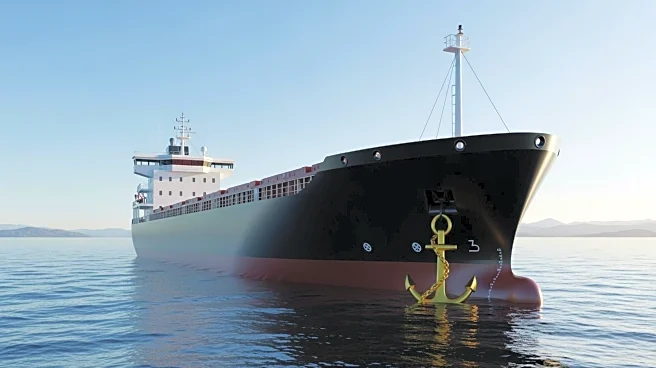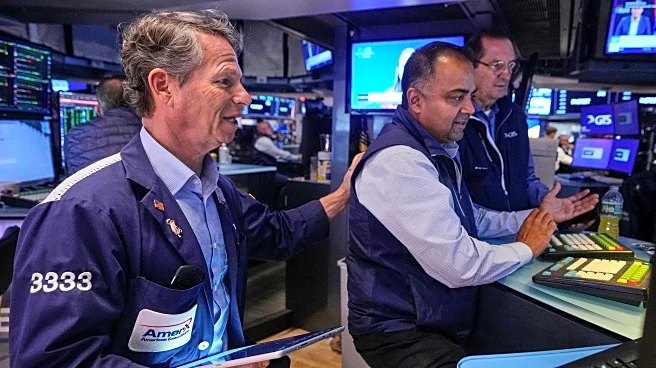What's Happening?
Shipping carriers are being advised to lock in long-term agreements with shippers as freight rates between Asia and the U.S. continue to decline. According to Xeneta AS, a Norwegian ocean freight rate benchmarking
platform, the average long-term contract rates on the China–US West Coast route fell by 40% to $3,300 in August from January, while short-term rates dropped by 68% to $5,793 during the same period. The decline in rates is attributed to ongoing uncertainty in trade policies, particularly tariffs imposed by President Trump, affecting countries like China, the Philippines, Vietnam, and Malaysia. This volatility has led to a mismatch between demand and supply, impacting the profitability of carriers.
Why It's Important?
The decline in freight rates has significant implications for the shipping industry and global trade. Carriers face the challenge of maintaining profitability as rates approach break-even levels. The situation presents an opportunity for shippers to secure favorable rates and service guarantees, potentially leading to cost savings. However, the overcapacity in the market could further erode rates, affecting the financial stability of shipping companies. The geopolitical tensions and trade barriers, particularly affecting Chinese operators, could reshape trade dynamics and influence the strategic decisions of carriers.
What's Next?
Carriers are expected to employ strategies such as smart capacity management, slow steaming, and blank sailings to manage the decline in rates. As the market adjusts, carriers may also consider demolishing container ships to address overcapacity. The situation could lead to increased pressure on Chinese operators due to higher trade barriers and port fees in the U.S. The industry will likely see continued volatility influenced by geopolitical factors and shifts in demand.
Beyond the Headlines
The ongoing changes in freight rates and trade policies could have long-term effects on global supply chains, potentially leading to realignments in trade routes and partnerships. The environmental impact of increased shipping activity and the potential for increased emissions due to overcapacity are concerns that may require attention from industry stakeholders.













